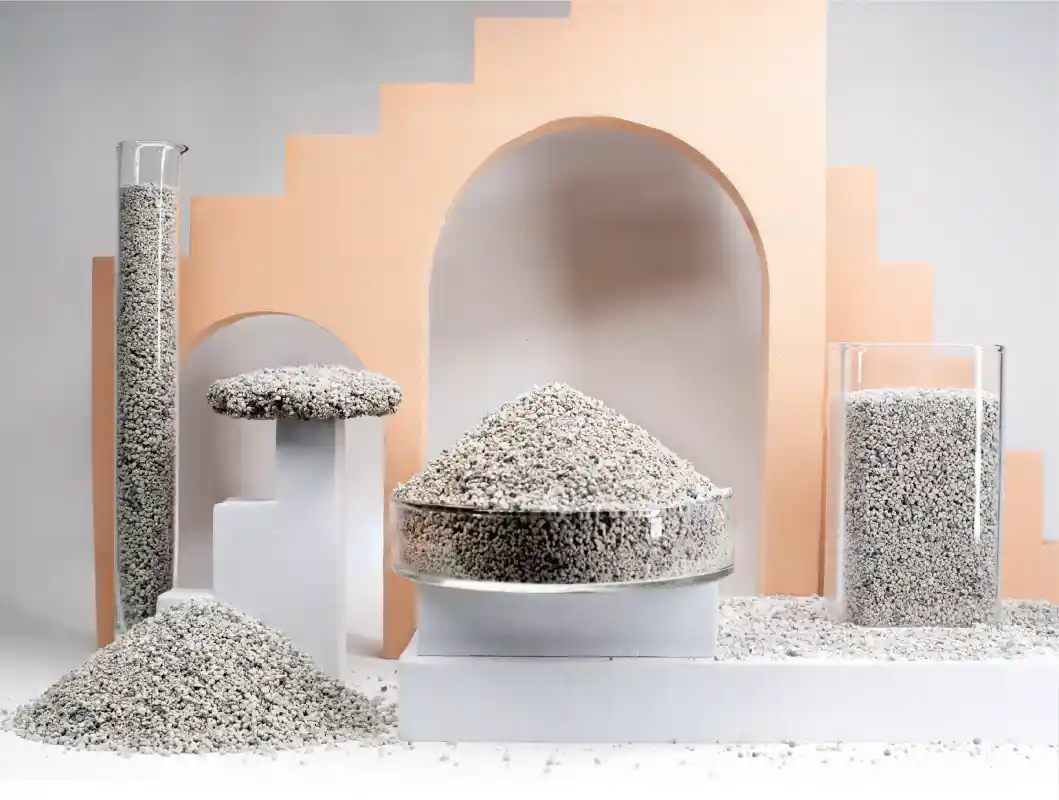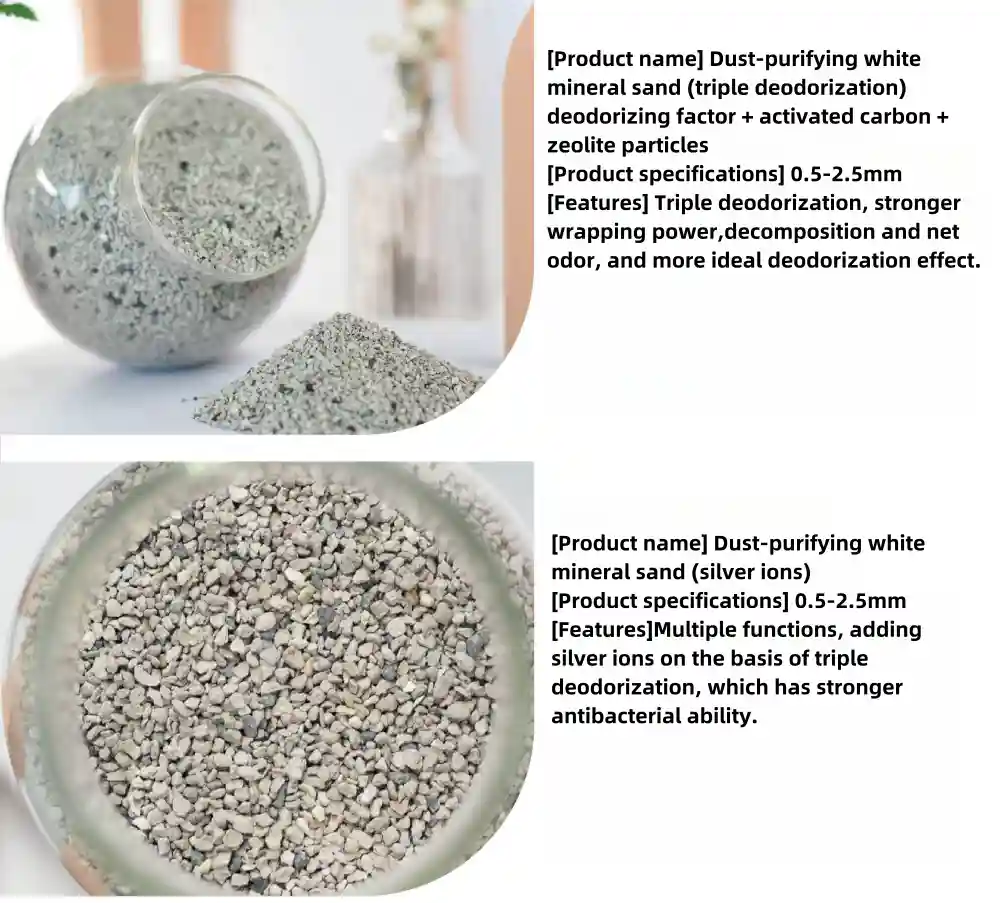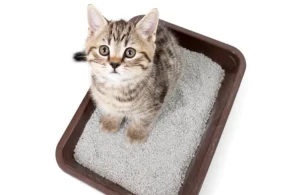Table of contents
- Unraveling the Genesis of Bentonite Cat Litter
- Bentonite Cat Litter: Enhancing Cat Comfort
- The Role of Montmorillonite in Cat Litter
- Sodium-Based and Calcium-Based Bentonite
- Bentonite distribution in China and the United States
- Sodium Modification of Calcium-Based Bentonite
- Our Bentonite Cat Litter Product
Unraveling the Genesis of Bentonite Cat Litter
Once upon a time, in a quiet little town, there lived a merchant named Edward Lowell. He ran a small shop selling various everyday items.
One day, his neighbor knocked anxiously on his door, his face filled with worry: “Edward, could you please help me? My cats have used up all the ashes in the house, and I don’t know what to do.”
Upon hearing this, Edward came up with a plan. He remembered a mineral called bentonite, which had the property of absorbing water and odors. So, he fetched some bentonite from his shop and gave it to his neighbor.
A few days later, the neighbor excitedly came to Edward’s shop and told him, “Your bentonite is amazing! It’s much better than ashes. Not only does it absorb urine odors, but it also forms solid clumps, making it easy to clean.”

Edward was overjoyed to hear this. He began to think about how to improve the bentonite to make it more suitable as cat litter. After numerous experiments and refinements, he finally invented a brand new cat litter one early morning, naming it “Tidy Cat Litter.”
This new type of cat litter quickly spread throughout the entire town and even to the surrounding areas. People found it more convenient, hygienic, and effective in controlling odors compared to traditional sand.
From then on, Edward Lowell’s bentonite cat litter became the preferred choice for people with pet cats, bringing him wealth and fame. This small invention not only improved people’s quality of life but also brought more happiness and convenience to them and their furry companions.

Bentonite Cat Litter: Enhancing Cat Comfort
Bentonite cat litter is a high-quality product whose performance and quality directly impact the quality of life for cats and the cleanliness experience for their owners. Understanding the nature of bentonite and its various modification methods is crucial for selecting suitable cat litter.
Bentonite, also known as “montmorillonite” or “expansive soil,” is a non-metallic mineral mainly composed of montmorillonite, often containing small amounts of other minerals. The content of montmorillonite determines the utilization value of natural bentonite.

The Role of Montmorillonite in Cat Litter
Montmorillonite, commonly known as Bentonite, is the primary component of cat litter. Initially discovered in 1847 in Montmorillon, France, it has since been unearthed worldwide. Montmorillonite, a soft clay mineral, is crucial for enhancing the performance of cat litter.
Forming as colloidal aggregates settling in water, Montmorillonite comprises layers of silicon-oxygen tetrahedrons interspersed with layers of aluminum-oxygen octahedrons. This unique structure enables it to efficiently absorb moisture, making it an ideal choice for cat litter.
The montmorillonite content directly influences the water absorption capabilities of cat litter. Higher levels of montmorillonite translate to improved absorption, ensuring cleaner and odor-free litter boxes.
In essence, montmorillonite plays a pivotal role in creating high-quality cat litter, effectively absorbing moisture and neutralizing odors, thereby enhancing the overall experience for both cats and their owners.

Sodium-Based and Calcium-Based Bentonite

Moreover, sodium-based montmorillonite exhibits higher exchangeable cation content, typically ranging from 750 to 1000 mL/kg, mainly composed of sodium ions, whereas calcium-based montmorillonite has lower exchangeable cation content, usually around 600 mL/kg, predominantly comprising calcium ions.
Furthermore, sodium-based montmorillonite has a higher colloidal value, reaching up to 100%, compared to approximately 60% for calcium-based montmorillonite. This difference in colloidal value contributes to variations in water absorption capacity and speed. Sodium-based montmorillonite can absorb water more efficiently, with absorption rates exceeding 500% and slower absorption speeds, while calcium-based montmorillonite has lower water absorption capacities, reaching a maximum of 200%, with faster absorption rates, often saturating in less than 2 hours.

Bentonite distribution in China and the United States
In the United States, sodium-based bentonite mines are primarily situated in the Oklahoma Bentonite Belt in the central-southern part of Oklahoma, which holds the largest reserves of sodium-based bentonite globally. Other notable locations include central Arizona, near Tempe and Phoenix, as well as northeastern Texas near Gonzales. However, the highest-quality deposits are found in Wyoming, formed from ancient volcanic deposits. They exhibit superior adsorption and antibacterial properties, ranking among the world’s top-tier standards, and are the primary source for various cat litter brands.
China has the highest reserves of bentonite mines in the world. However, about 80% of these reserves are primarily calcium-based bentonite, with relatively fewer reserves of sodium-based bentonite. Conversely, the United States has several top-tier sodium-based bentonite mines.
In China, sodium-based bentonite mines are mainly located in Peixian County, Xuzhou, Jiangsu Province; Anxiang County, Changde, Hunan Province; Wuhua County, Meizhou, Guangdong Province; Quyang County, Baoding, Hebei Province; and Yaoxian County, Tongchuan, Shaanxi Province. However, the largest quantity of sodium-based bentonite mines is found in Inner Mongolia.
The deposits in Wyoming are relatively shallow, whereas those in Inner Mongolia are much deeper. Shallow mines benefit from lower pressure, resulting in excellent water absorption and superior expansion capabilities. Despite the higher prevalence of calcium-based bentonite in China, its performance can be enhanced through modification. Sodium-modified bentonite typically offers comparable performance to natural sodium-based bentonite but at a third of the price.

Sodium Modification of Calcium-Based Bentonite
Sodium modification of calcium-based bentonite is a crucial processing technique aimed at adjusting its material structure to enhance its performance and application range. Below, we will introduce several commonly used processing techniques along with their experimental methods.
Dry Method Modification Process
This method typically employs a wet mixing approach. Initially, the bentonite is mixed with water and acetic acid salt, and continuously stirred to ensure thorough dispersion. Subsequently, the mixture is heated to a certain temperature to expand the bentonite, completing the sodium modification. This method is simple to operate and is commonly used in modification processing.
Dry Modification Process
Different dry sodium modification methods are utilized, such as heap-yard sodiumization and roller milling sodiumization. For example, in heap-yard sodiumization, the bentonite and sodiumizing agent are placed in a heap-yard, allowing them to undergo sodiumization reaction through natural heap-yard mixing over a certain period. This method features simple processing and is suitable for small-scale production.
Semi-Dry Desulfurization Modification Process
This is an effective modification method. In this process, the bentonite is first mixed with an appropriate sodiumizing agent. Then, through a series of processing steps involving pressure, temperature control, etc., the bentonite completes the sodiumization reaction. For instance, in experiments, semi-dry desulfurization modification process can be used to modify bentonite, including steps like planting soil, sandstone potassium carbonate, watering and rolling, storage, crushing, grinding, and performance testing.
When selecting sodiumizing agents and assessing the practical effects of modification, it is necessary to consider factors such as their advancement, their impact during processing, and their cost. Experimental results indicate that Na2CO3 as a sodiumizing agent yields better results.
In conclusion, sodium modification of calcium-based bentonite is a crucial processing technique. Selecting appropriate techniques and sodiumizing agents is essential for enhancing product quality.

Our Bentonite Cat Litter Product
We are a manufacturer specializing in bentonite mineral cat litter products, based in China. Our operations span across three production bases: the Premium Sand – Dust-Free Series production base in Inner Mongolia, the Mid-range Sand – Micro-Dust Series production base in Liaoning, and the Economy Sand – Low-Dust Series production base, also located in Inner Mongolia.

Premium Sand ——Dust-Free Series
Our dust-free cat litter series is sourced from the middle to late Cretaceous period, originating from underground mines 300 meters deep, formed by lacustrine volcanic ash deposits. Through specialized processes such as interlayer pillar support and nano-layer peeling, the material is refined. Our product boasts performance comparable to imported mineral sands, yet it is priced 50% lower, serving as a high-quality alternative to imported sands. Resembling American sands, our cat litter is favored by the new generation of consumers. Our high-end dust-free mineral sand, selected from the same geological period, features a unique octahedral layered structure of aluminum oxides, naturally possessing the function of odor absorption and harmful bacterial control, making it an ideal material for cat litter.
- Specifications: 0.5 mm-2.5 mm.
- Features: Rapid water absorption, quick clumping, strong and durable. Excellent odor control, non-stick bottom, and its disc-shaped form make it more economical in litter usage.

Using high-quality bentonite clay as the raw material, our product undergoes wet sodiumization, modification, and other processes. Due to variations in the original ore color, it is available in different variants including micro-dust black mineral sand, micro-dust standard white mineral sand, micro-dust ultra-white mineral sand, and micro-dust yellow sodium-based mineral sand.
- Specifications: 0.5-2.5mm;1.0-2.5mm
- Features :Low dust emission, strong water absorption, tight and solid clumping, non-stick bottom, and exceptional cost-effectiveness.

This product is manufactured using dry sodiumization of bentonite clay, followed by grinding, granulation, drying, and sieving processes.
- Specifications: 0.5-1.5mm, 1-3.5mm, 1-2mm, 2-4mm.
- Features : Low dust emission, excellent clumping and water absorption, and higher cost-effectiveness.







